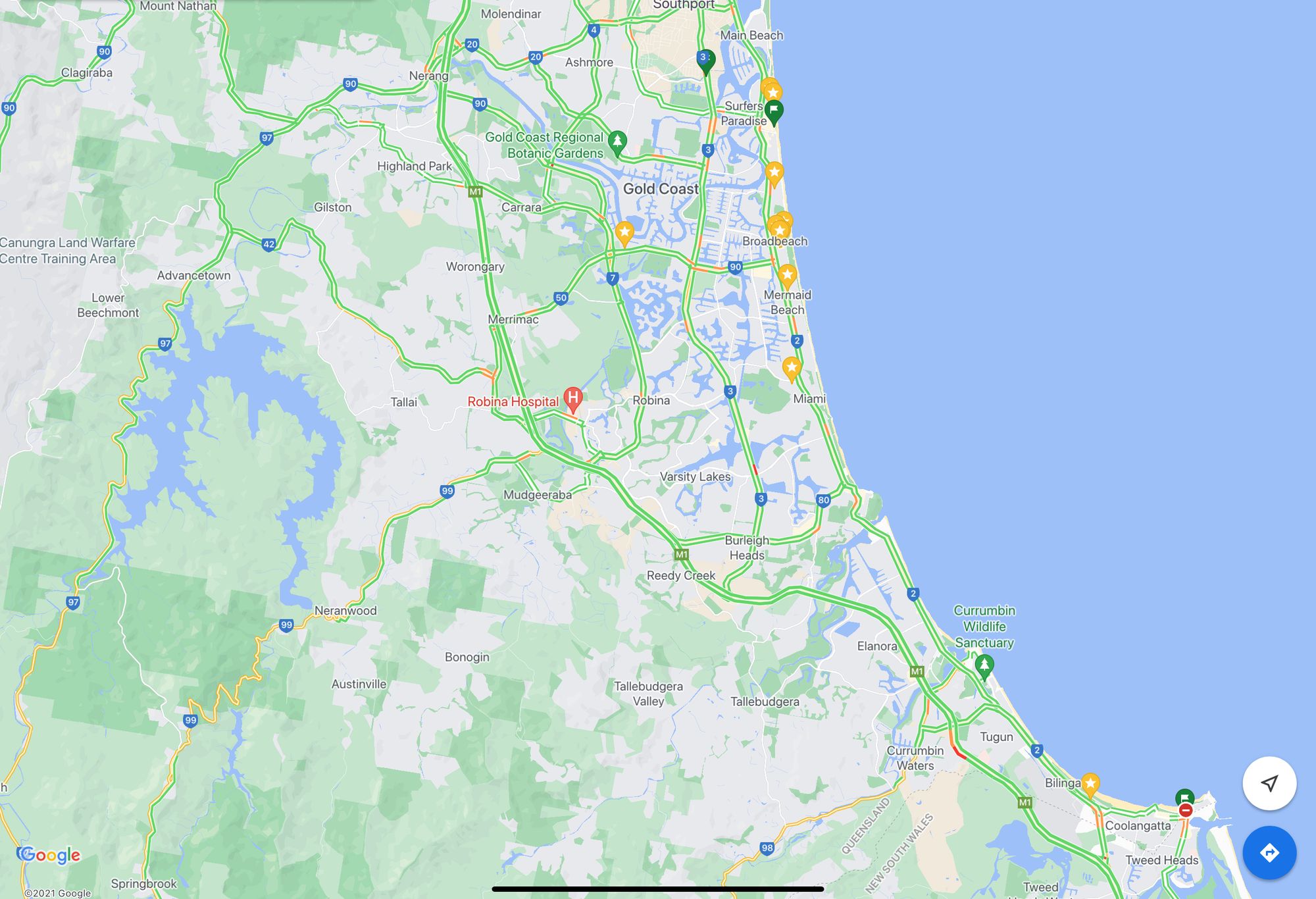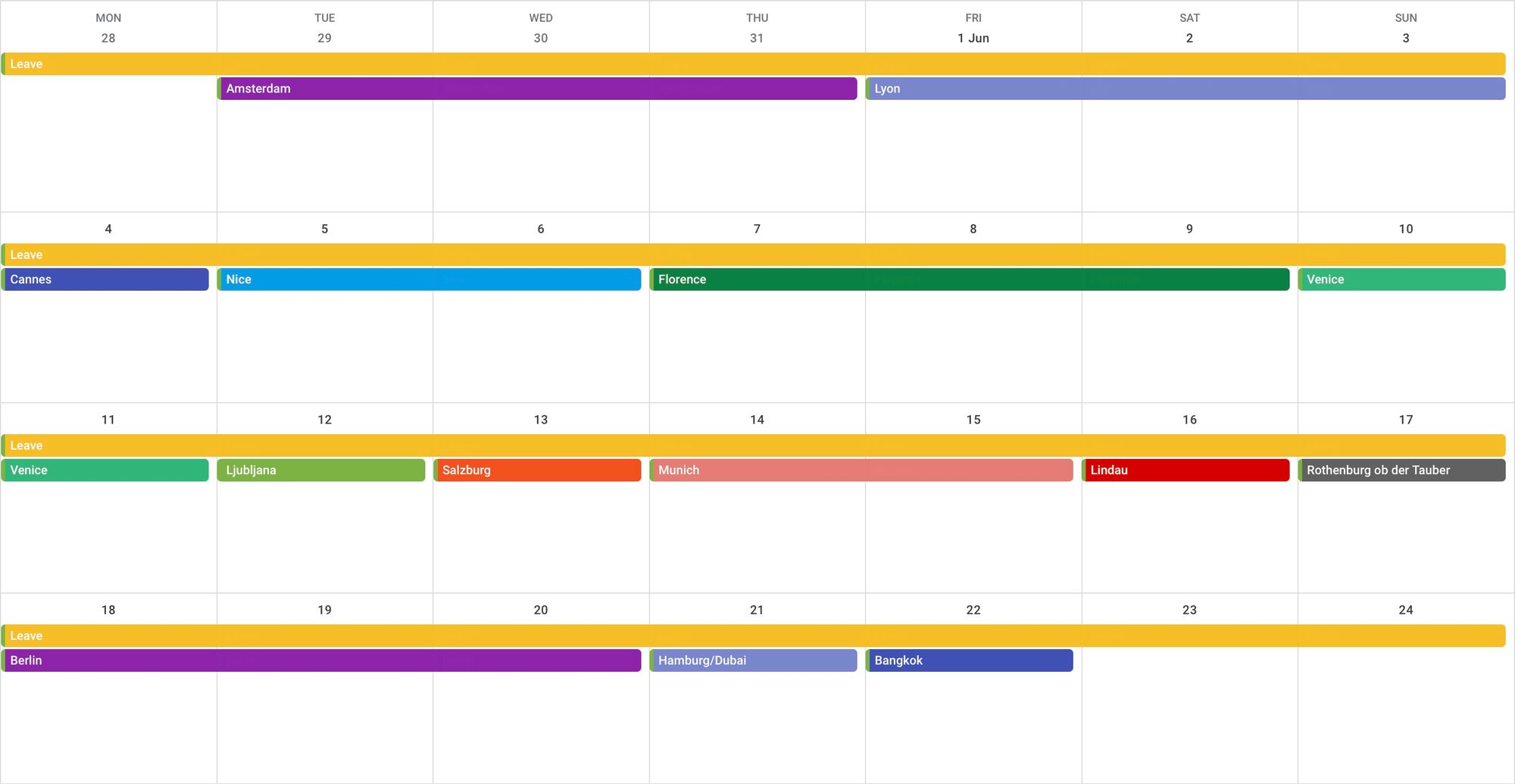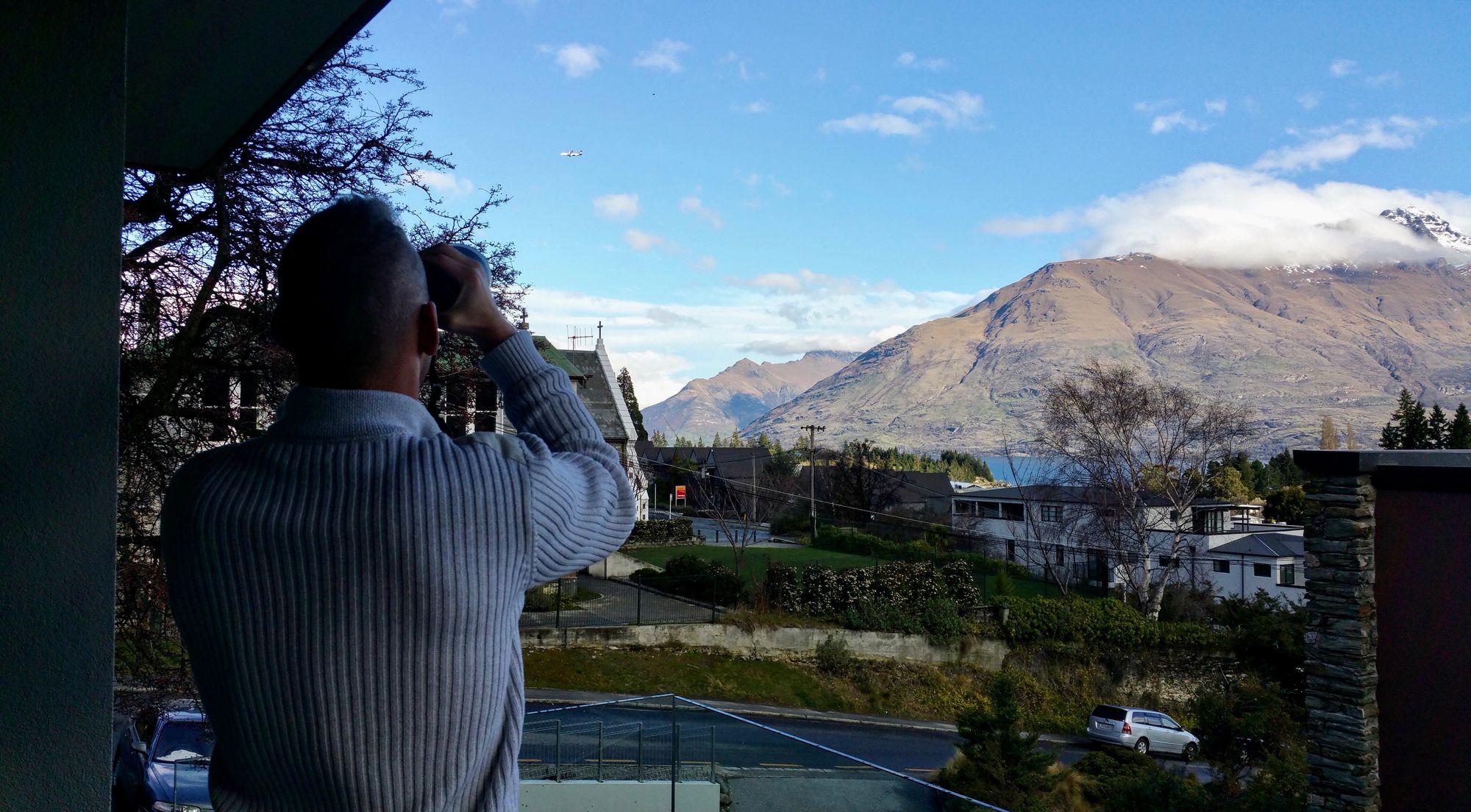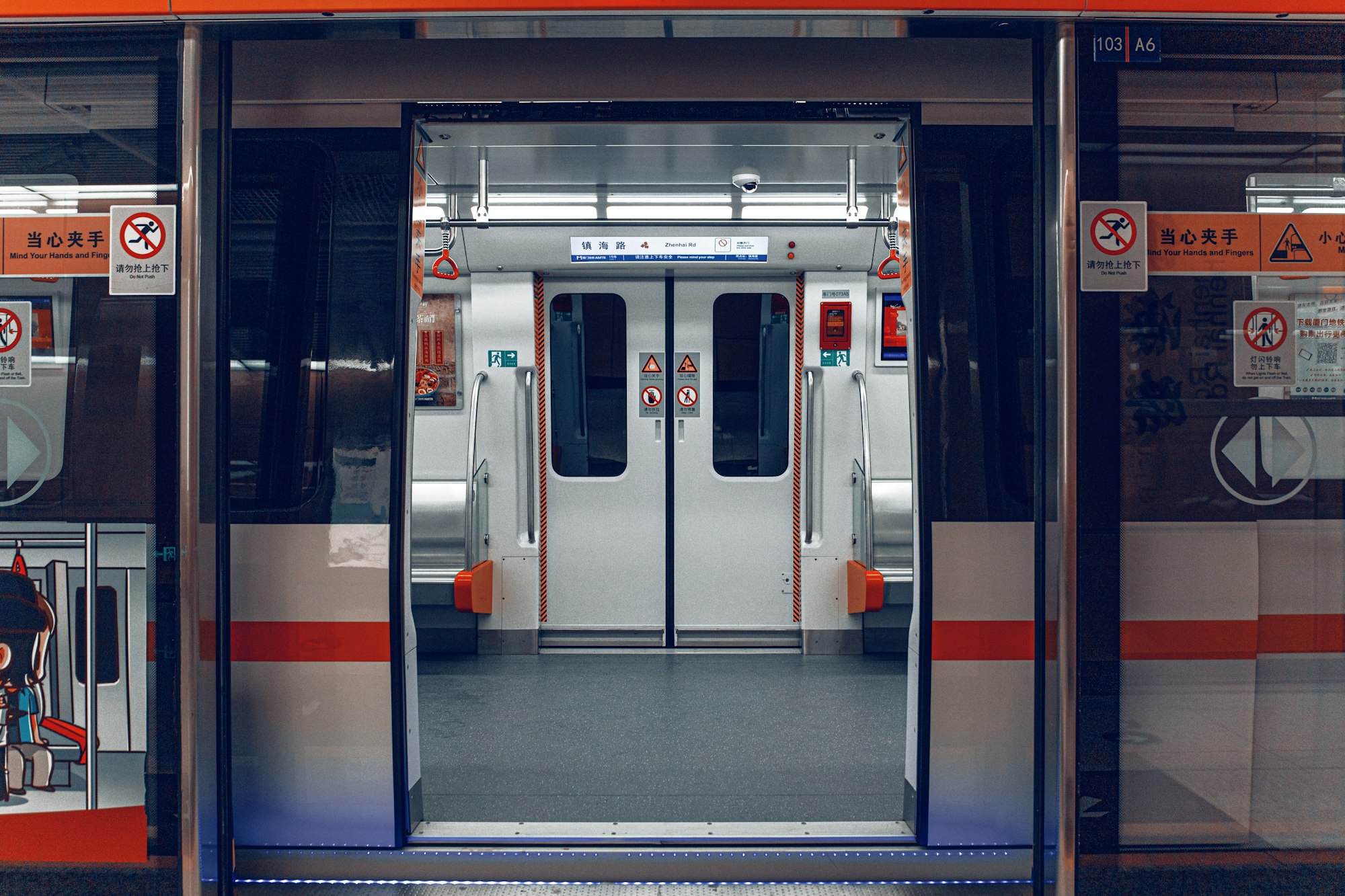The Ultimate Guide for Your Next Travel Adventure
Bon Voyage
There’s nothing like getting excited about your next travel adventure.
Planning it is half the fun.
One concern this pandemic has brought to many is the feeling that life is passing us by and we’re missing out.
Then why not make best use of this time and prepare for the future?
To make sure your upcoming adventures are memorable ones.
Whether the thought of holiday travel has not crossed your mind, or you know your next five destinations, let’s take a detailed look at planning your next vacation.
Google Maps

My number one resource when travelling is Google Maps.
It’s not everyone’s cup of tea, but aside from interoperability with other Google apps, its Saved Places feature will serve you throughout your travels.
Saved Places allows you to bookmark landmarks, accommodation, restaurants, and more.
Find a place you’d like to visit - save it.
Found a place memorable - save it.
All over the world.
I visited the Gold Coast earlier this year and mapped out places I was both going to and wanted to go.
Previously, I only used “starred places” and “want to go” icons.
But follow Chris’ guide and you’ll unlock its full potential.
⩕
Your travels may take you to places with limited or no mobile reception.
How do you find your way around when you have no idea where you are and/or have difficulty conversing with locals?
Solution: Offline maps
Google Maps allow you to download map areas for offline use in most countries.
Details available will be limited but you’ll be able to access your saved places and navigate using the app.
Bucket List

Have you got a list of places to see or things to do in your lifetime?
Sure, you do. You’ve saved them on Google Maps or keep them stored in your head.
If you’re familiar with the Getting Things Done (GTD) approach, you’ll recognise that writing them down and listing in order of priority can be applied to your travel bucket list.
Recognise that some activities and events have a finite time in which it’s practical or viable to do them.
Although not impossible, many wouldn’t consider more physically demanding activities like bungee jumping or scaling Mount Everest towards the twilight years of their life. You’ll do them when you’re more fit and able.
Whilst for others, there’s just not that many trips left in us to get everything done.
I created a travel bucket list for us to use (and shared my top three travel experiences).
Don’t worry about going into detail. Use it to list everything you want to see and do; and in time, create an itinerary when it’s time for that adventure.
If you're in search of more ideas, Annette has a ginormous list with over 1,000 experiences to be had.
Itinerary

From here to there and back again, and everything in between.
Creating and filling an itinerary is the most time-consuming (yet fun) part of the whole process.
We all have our methods that are always under refinement, so I’ll share some tips, techniques, and resources you may already be familiar with.
It’s easier to see your itinerary on a calendar.
Here’s the outline of my parents’ first European adventure I took them on a few years ago.

Pretty full-on, huh? It was very much a case of planes, trains, and automobiles on that trip.
Once knowing your leave dates, one of the first things to look at are travel dates and times to and from home, that way you know the block of time available to play with.
Whether using frequent flyer miles or paying full fare, comparison sites like Skyscanner and Google Flights aid in finding all options within the cities, countries, or continents you’re visiting.
Where possible, compile and outline everything first, book last. You don’t want to pay for something then forfeit it because of a change of plan.
However, sometimes a flight or accommodation deal is too good to miss, so you’ll book first, then plan around it.
The easiest way to compile is by detailing each city on separate documents.
I’ve started one for your next trip to Sydney which you can add to in time.
⩕
How you choose to experience a destination is up to you.
For some, a few days is enough, whilst others seek the experience of feeling like a local and stay longer.
Through experience, I’ve found four days (and three nights) to be sufficient in major cities. Your days will be full, but there’s ample time to see (almost) everything even if you take things at a slower pace.
I have a buddy whose hobby is plane spotting. He has a list of every airline aircraft (type and registration) from all over the world and bases travel on cities and countries he hasn’t seen aircraft in.
He’ll spend most of the time wandering around airports, ticking aircraft off his list, and is happy to spend one night in a place.
Even on our Queenstown ski trip, he brought binoculars to ensure he hadn’t missed aircraft from previous visits.
Oh yeah, I give him shit about being a plane nerd.

If you’re doing a continent and don’t know all the countries or cities you’d like to visit, a good resource to check out is Price of Travel.
This site provides a brief overview of major cities, their attractions, weather conditions and a breakdown of costs for goods and services. Great, if you’re travelling on a budget.
Numbeo is a similar cost of living website.
Want video footage?
Highlights of destinations can be viewed on YouTube channels such as Expedia.
Accommodation

The two main options to consider when choosing accommodation is whether you want a typical hotel/backpacker stay or more of a local experience.
When planning hotel stays, my primary resource is Trip Advisor. It’s evolved and diversified to be more commercial but is still a top choice.
Compare your search results with a similar site like Hotels Combined.
When using Trip Advisor, search results are better sorted by traveller ranked (instead of the default best value) as they’re listed in a more logical order (i.e. five stars down).
If there’s a lower star accommodation that ranks highly, it’s usually for good reason, but do your due diligence by reading multiple reviews.
Your search can be further refined through categories available such as star ratings, neighbourhoods and amenities.
A map feature is available which displays all results and their locations relative to each other.
Book directly with the hotel where possible. Not only will they match the best rate you find online, but you’re helping the local industry instead of commissions going to an intermediary service. I’ve received more room upgrades booking direct, but don’t expect it to happen all too often.
For a more local experience, consider an Airbnb or similar.
Hotel rooms are quite sterile and samey whereas you’ll stay in some fantastic places owned by locals which exhibit what life is like in that suburb.
It’s more personal and many hosts provide a wealth of local information you don’t get staying in hotels.
⩕
Walkability factor is a big thing for me. I want to be able to step outside my accommodation and be amongst or close to the action, whereas others may prefer somewhere peaceful and quiet, happy to sacrifice travel time to the heart of the city.
Different neighbourhoods offer different experiences. To determine where best suits you, use Google search, (Trip Advisor) forums and YouTube.
Some opt to not book accommodation until in location. The advantage here lies in road trip scenarios where you find yourself in a place you really like and want to stay multiple nights.
You may also be preferential to nearby towns or suburbs you come across once in location.
Pre-booking robs you of staying somewhere (nicer) you hadn’t considered but is always the safer option as peak season in popular destinations can result in limited choice.
Sightseeing

Once accommodation is sorted, it’s time to fill in your days with things to see and do.
Trip Advisor outlines popular attractions.
Time Out is another great resource in the cities they cover.
Use social media to see others’ experiences. Search hashtags of the place you’re visiting to see what comes up.
Many bloggers and vloggers travel the world, documenting their experiences; one of my favourites, the YouTube channel Attaché.
Find those which appeal to you.
Walking tours provide a wealth of information you won’t get seeing the city on your own.
Throughout Europe, I used Sandeman’s. They host free walking tours, up to three hours in duration, with gratuities to the host at the conclusion.
You’ll learn about history, culture and leave with a better appreciation of life in the city. Well worth the excursion which I highly recommend.
Paid tours are also worthwhile for iconic sites and experiences.
In Rome, I used City Wonders for their Vatican and Colosseum tour.
In Osaka, Street Kart (formerly MariCAR) for their city go-kart tour.
And in Los Angeles, Green Line Trips for their dispensary tour.
Get on Google and find ones that tickle your fancy.
Again, if there’s something you want to see, pre-book, as in peak season you may not be able to book on the day or even the night before.
I’ll be going back to visit the Louvre in Paris for this very reason.
Local markets are a great place to purchase souvenirs and sample local produce. See which days of the week they occur.
⩕
When seeing sites on your own, overestimate the amount of time you think you’ll spend (1.5 to 2x to be safe) and don’t try and fit too much into each day.
Things along the way will grab your attention and slow progress. If you’re pressed for time, save that place you find on Google Maps and come back later.
Transport

Most will walk, use public transport, taxis and rideshare.
Many cities implement similar smartcard-based transport systems for use throughout their network. These cards may be exclusive to the city you’re in so read the fine print (or ask) and be sure to credit only as much as you think you’ll use.
In Sydney, you don’t need to use our Opal card, as contactless payment is available using your credit/debit card.
Countries like Japan use multiple cards across their network (with some restrictions on each one), so best do your research beforehand to know what is applicable for where you’re headed.
Airport shuttles are advisable for their convenience over public transport in certain cities.
Taxi drivers can be corrupt in some countries so read up or use rideshare where possible.
I paid more than double the cost of a fare in South-East Asia because I didn’t negotiate beforehand.
Many hire car companies are universal, however, smaller companies in certain countries exist.
There are alternatives such as Renault Eurodrive which provides a new vehicle and unlimited kilometres to drive throughout Europe.
Your driver’s license may not be sufficient, so check if you require an International Driver’s Permit (IDP) for the countries you’re visiting.
Dining

For the foodies among us, much anticipation and excitement lie in sampling the local cuisine. It’s a major part of the travel experience.
Zomato and Google Maps are good resources to use when deciding where to dine.
For those unfamiliar with the Google Maps app on their device, you’ll notice an array of buttons along the top of the screen underneath the search bar which include categories such as restaurants, groceries and other services.
On the bottom, you’ll find a community feed with reviews, updates and recommendations of businesses in the local area. Use these to help you find places you wish to dine and more.
Like city walking tours, food tours are a heap of fun and a great way to try authentic cuisine that locals eat; one of my favourites, riding scooters throughout Ho Chi Minh sampling various delicacies from different vendors.
Tap water is not potable in certain countries. Your safest bet is to buy bottled water and/or bring Aquatabs to purify the water.
Food poisoning can occur.
Consider these safety guidelines and bring gastro tablets to be safe.
Lock it In

Now that you’ve got your plan together, it’s time to tie up loose ends and complete other necessary tasks in the lead up to departure.
When you’ve reviewed and are happy with your itinerary, book everything.
Here’s a tip: when searching for flights, use private browsing or incognito mode on your web browser.
Most websites leave cookies on your computer to store data such as search results from previous visits.
It’s happened to me enough times to believe that airline websites recognise you’re interested in a particular flight and raise the price within a few re-visits.
If you like to choose your seat in an aircraft, know that some choices are better than others.
Seat Guru has seat maps for over 1,000 aircraft from several airlines. Check to make sure you’re not picking a bad seat.
⩕
Vaccines against polio, yellow fever and others may be required for the country you’re headed.
Certain countries have visa requirements prior to entry. Applications may take a few weeks for approval so ensure you prioritise it.
Ensure you have scanned copies of your passport and photocopies of your Visa, bookings and itinerary. Leave a copy with family/friends in the event you lose them on your travels.
Think worst case.
What happens if you lose everything (i.e. you get robbed) and can’t access email because you need to verify with an SMS code?
Money
"However much you think you’ll spend – double it."
In many places, cash is king, however, card options are available, be it your own credit/debit card or a travel credit card onto which you deposit funds from your bank account. Shop around as some have better rates than others and bring a spare card just in case.
Inform your bank you’ll be travelling overseas, otherwise, your transactions may be blocked. You’re able to do this through internet banking with some institutions.
There are many places you’re able to exchange currency, however, the worst rates are at airports, but may be your first opportunity to (when arriving in the country) if not readily available elsewhere (e.g. Lao Kip).
If your destination’s currency is weaker than your own, (e.g. Oz to South-East Asia), commissions there will be smaller so exchange enough for a few days before leaving and the rest when abroad.
Find (on Google Maps) and save the currency exchanges with the best rates near your accommodation, that way you know where to go when you arrive.
Here’s one I use in Bangkok.
Insurance
Shop around for travel insurance, as some products are better than others.
The complimentary insurance which accompanies your credit card usually sucks, so look to purchase a standalone product.
If you’re engaging in extreme/snow sports, it may be an optional extra, so ensure you’re covered.
For peace of mind when hiring vehicles, you can opt to pay for zero excess. This will be expensive and is how hire car companies make a large portion of their profits.
If you opt-out, have an accident but have travel insurance, you’ll be required to pay for the damage upfront and make the claim once you’ve returned home, so be aware of the maximum you’ll be required to pay (in the worst-case scenario) as it could be a hefty sum.
To protect yourself, walk around the vehicle slowly whilst filming (on your phone) and pointing out existing damage.
Mobile Phone/Data
International roaming costs are generally expensive so you may want to consider alternatives.
Travel sim cards are one of your best options, so shop around.
Avoid using airport WIFI at all costs. Better choices are cafes (with password protection), McDonald's, and Starbucks.
If your phone is on a plan, it may be locked to your carrier so ensure you have it unlocked before departure.
Scams
Be aware of potential scams for where you’re headed.
One of my mates had his money belt cut from his waist without him knowing and I went on a Tinder date in Europe which turned out to be a scam.
Local Laws and Customs
Alcohol laws in the United Arab Emirates have seen people thrown in jail.
Chewing gum is illegal in Singapore.
Eating on the street is frowned upon in Japan.
Inform yourself of the local laws for where you’re visiting.
Before you leave, learn basic phrases in the native tongue as it goes a long way.
Consider downloading Google Translate, as its camera function alone is brilliant.
Fitness
Get your ass up and start walking.
Sitting (at work) eight hours a day to walking eight hours a day will wear you out real quick so ensure your fitness is at a level that will carry you throughout your trip.
Wear good footwear.
Oh, and there are things called hills. Don’t avoid them in your preparation.
Packing

"However much you think you’ll need – halve it."
How much you bring should depend on your duration of stay and forecast weather conditions.
AccuWeather provides monthly forecasts so you can plan ahead.
Consider using packing cubes for convenience. They’re brilliant.
For carry-on, pack a light jacket, a spare shirt, and underwear in the event your luggage is lost upon arrival.
Make your check-in luggage stand out or identifiable.
I have an orange coloured hybrid trolley that is more than five years old. They’re quite unique in appearance. I still managed to collect someone else’s from a carousel by accident.
Pack a small backpack for walking around each day and only take what you need. Carry a photocopy of your passport unless you'll need it (what if you get robbed?) and secure the rest of your belongings before leaving your accommodation each day.
Other items to bring:
- Quick-dry towel
- Sanitary wipes (because aircraft tray tables are a cesspool of germs)
- An empty metal water bottle (which you can fill after passing through airport security)
- Multiple travel chargers
- Nasal spray (in case you get congested on the flight)
- Your own toilet paper – because there’s some rough shit out there
Christine has created the ultimate packing list and documented many worthwhile tips to consider.
Follow her packing advice and remember, if you’re on the fence about bringing something, don’t.
Conclusion
Enrich yourself by making travel a part of your life.
Whether it’s a yearly pilgrimage or the occasional weekend getaway, you’re breaking free from the daily grind, living and appreciating life outside of your bubble.
Maximise your trip’s potential. Plan it out.
Yes, spur of the moment getaways can be just as exciting, but you’re taking shortcuts and may overlook (or miss out on) some of the best things a destination has to offer.
There’s no better time than right now to start planning your next vacation.
Bon voyage.

